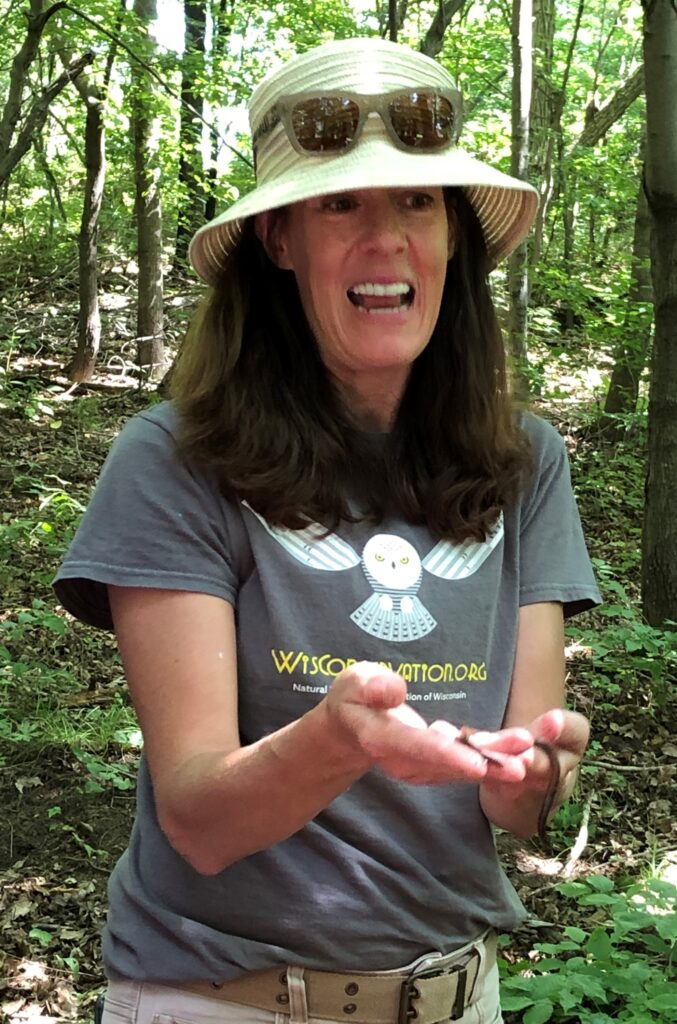By Becky Gray, DNR Forest Health Team Leader, Fitchburg, Rebecca.Gray@wisconsin.gov or 608-220-3022
While Bernie Williams might yet become a famous artist or comedian, her work with the DNR Forest Health Program was retired on Aug. 29, 2022. Bernie reached minor celebrity status through her presentations on invasive plants and worms across Wisconsin and the country. She was awarded for Outstanding Contribution to Accomplishing the Division of Forestry’s Purpose in 2018 because of her role with the Best Management Practices (BMPs) for Invasive Species, NR40 and her dedication to outreach and education. We are really going to miss Bernie’s humor and crazy stories and wish her all the best as she takes her garden, bees and travels to the next level!








